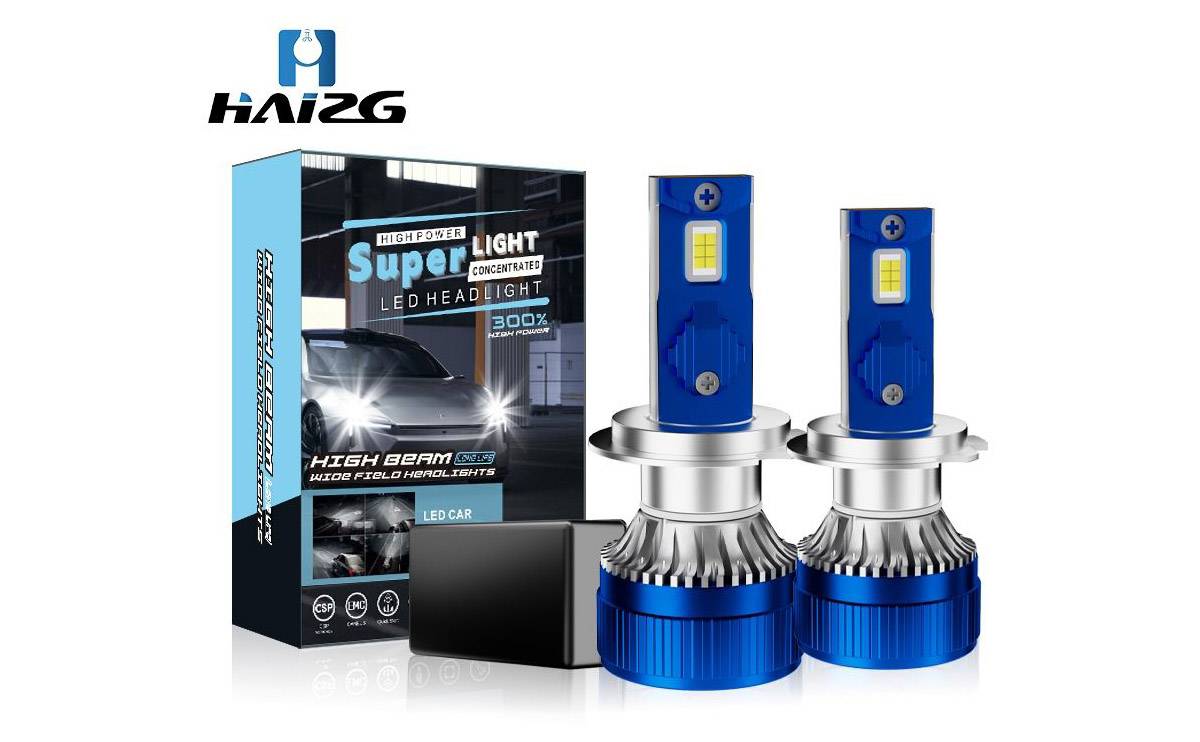Automotive LED headlights have gained immense popularity due to their superior efficiency, long lifespan, and modern aesthetic appeal. However, as with any advanced technology, the legal status of LED headlights varies from one country to another. In this article, we’ll examine the global regulations regarding automotive LED headlights, discuss their benefits, and explore how you can ensure compliance with the laws in your region.
Why Automotive LED Headlights Are Popular
Automotive LED headlights have changed the way we drive. These high-quality car headlights provide better illumination, energy efficiency, and durability compared to traditional halogen bulbs. Car LED lighting solutions also enhance the vehicle’s appearance, giving it a sleek, futuristic look.
LED headlight bulbs deliver brighter and clearer light, improving visibility for drivers and reducing glare for other road users. Additionally, they consume less power and generate less heat, making them more energy-efficient and eco-friendly than halogen lights.
Legal Considerations for Automotive LED Headlights
While automotive LED headlights are legal in many countries, some regions impose strict regulations regarding the type of lights allowed on public roads. These regulations exist to maintain road safety and ensure that headlights do not cause excessive glare or impair visibility.
1. United States In the U.S., automotive LED headlights are legal as long as they meet standards set by the Department of Transportation (DOT). The LED headlight bulbs used in vehicles must comply with the Federal Motor Vehicle Safety Standards (FMVSS). Aftermarket LED headlights must undergo testing and approval before being used on U.S. roads.
2. European Union The European Union has strict regulations for automotive lighting. LED headlight bulbs are permitted in most EU countries if they comply with the ECE R112 standard, which defines the performance and design criteria for automotive lighting. Aftermarket LED bulbs that do not meet these standards can lead to fines or vehicle inspection failures. Drivers should ensure their lighting systems comply with these regulations before hitting the road in Europe.
3. Australia Australia allows the use of LED headlights, but the installation must meet the Australian Design Rules (ADR). The ADR specifies guidelines on the type, intensity, and positioning of vehicle lights. Aftermarket LED bulbs must adhere to these rules to ensure safe driving conditions.
4. Canada In Canada, automotive LED headlights are legal if they conform to the Canadian Motor Vehicle Safety Standards (CMVSS). Like the U.S., aftermarket LED headlights must meet certain requirements before use on Canadian roads. Professional installation helps ensure that the lights meet safety standards and do not interfere with visibility.
5. Middle East and Asia In the Middle East and Asia, regulations around automotive LED headlights vary greatly between countries. Some regions have clear guidelines, while others may lack specific rules altogether. It’s important to check with local authorities to confirm whether LED headlights comply with regional laws.
Why Choose Automotive LED Headlights?
Automotive LED headlights offer numerous advantages, which is why they’ve become the preferred choice for modern vehicles:
-
Energy Efficiency: LED headlights consume less energy than halogen lights, improving overall vehicle efficiency and reducing fuel consumption.
-
Extended Lifespan: LED bulbs last significantly longer than halogen bulbs, reducing the need for frequent replacements and maintenance.
-
Improved Visibility: LED headlights provide brighter and clearer light, enhancing road safety, especially in low-light or adverse weather conditions.
-
Enhanced Aesthetics: Many drivers opt for LED headlights to add a sleek, modern look to their vehicles. LED lights are available in various colors, allowing for personalized lighting effects.
How to Ensure Compliance with LED Headlight Regulations
When upgrading to automotive LED headlight bulbs or installing car LED lighting solutions, it’s important to ensure compliance with the legal standards in your region. Here are a few tips to help you stay compliant:
-
Choose Trusted Manufacturers: Purchase LED headlight bulbs from reputable manufacturers who provide high-quality car headlights that comply with local regulations. Verify if the products are DOT-approved or meet other relevant standards.
-
Get Professional Installation: Have a professional install aftermarket LED headlights to ensure they are correctly positioned and aligned according to local laws. Professional installation also ensures your lighting system meets all necessary regulations.
-
Check Vehicle Compatibility: Different countries may have different regulations for newer and older vehicles. Verify whether your car is compatible with the type of LED lighting system you wish to install.
-
Look for Certification: Ensure that any LED headlight bulbs or lighting solutions you purchase are certified for road use in your country. Look for markings like the DOT approval or ECE certification to confirm compliance.
Summary:
Automotive LED headlights have numerous advantages, including energy efficiency, improved visibility, and a modern appearance. However, these headlights are not universally legal in all countries. Drivers should familiarize themselves with the specific regulations in their region to ensure their car’s lighting system is compliant and safe for road use. By purchasing high-quality LED bulbs from trusted manufacturers and ensuring professional installation, car owners can enjoy the benefits of LED headlights while staying within the law.

